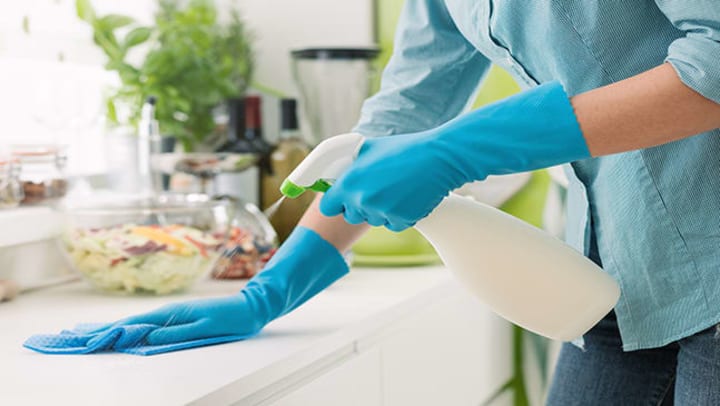Did you know that there is a difference between cleaning, disinfecting, and sanitizing? If you didn’t, you’re not alone. Truth is, most people don’t think about whether or not they are properly disinfecting their homes when they’re cleaning. But recent events are shedding light on what it means to disinfect, sanitize, and clean your environment to protect yourself against viruses and germs.
Cleaning removes germs, dirt, and impurities from surfaces or objects. Cleaning works by using soap (or detergent) and water to physically remove germs from surfaces. This process does not necessarily kill germs, but by removing them, it lowers their numbers and the risk of spreading infection.
Disinfecting kills germs on surfaces or objects. Disinfecting works by using chemicals to kill germs on surfaces or objects. This process does not necessarily clean dirty surfaces or remove germs, but by killing germs on a surface after cleaning, it can further lower the risk of spreading infection.
Sanitizing lowers the number of germs on surfaces or objects to a safe level, as judged by public health standards or requirements. This process works by either cleaning or disinfecting surfaces or objects to lower the risk of spreading infection.
(source: Centers for Disease Control)
So what does this mean?
Cleaning is what we do on a regular basis such as tidying and wiping down surfaces like tables and countertops so dirt and spots are removed and the areas appear clean. Most of the all-purpose cleaning solutions we use for this job are built to remove the visible stains and debris from surfaces. But that doesn’t necessarily kill the germs. You may be removing crumbs, dirt, and coffee stains, but you may not necessarily be removing the invisible germs like bacteria, viruses, or fungi. Cleaning is important but the purpose of cleaning is about how your environment looks and feels.
This is where disinfecting comes in. Disinfecting refers to the use of a chemical to kill almost all the microscopic organisms living on your surfaces. These organism aren’t visible to the eye the way a stain or dirt are visible, which is why you may not be removing them when cleaning. Disinfecting high-touch areas is an important factor to stopping the spread of contagious viruses like colds, flus, and yes—the coronavirus.
How do you effectively disinfect?
At all 32 of our MBK communities, all high traffic areas are disinfected using a chemical solution a minimum of twice per day. These high traffic areas include, but are not limited to, all doorknobs, handrails, restrooms, concierge’s desk, elevator buttons, coffee tables, light switches, and basically any surface that is being touched on a regular basis.
At home, it is recommended you use a chemical solution (look for one specifically called a disinfectant) and thoroughly wipe down all surfaces frequently touched by hands at least once per day. Make sure the solution remains on the surface for at least 10 minutes. It’s best to let the solution air dry, but if you need to wipe it dry, wait at least 10 minutes.
High traffic areas of the home include all door handles, restrooms, microwave (and other appliances) buttons and handle, refrigerator, faucet handles, remote controls, countertops, tables, and anything else that is touched on a regular basis. It is also important to disinfect your cell phones, computers, and vehicles. Wipe down the door handles of your car (inside and out), steering wheel, shifter, window and lock buttons, and anything else that may have been touched.
What is the difference between disinfecting and sanitizing?
Disinfecting aims to kill nearly 100% of germs on surfaces or objects, while sanitizing lowers the number of germs to a safe level. Sanitizing can also be achieved without the use of chemicals. Your dishwasher and laundry washer are examples of appliances that sanitize without chemicals (when using the “sanitize” cycle). Items such as clothing, carpets, and upholstery (like your couch) are things that cannot be disinfected with chemical products designed for hard surfaces but effectively sanitized.
While there is no definite measure that can protect us, there are safeguards and processes in place—such as proper disinfecting and social distancing—that can minimize our exposure and our potential to spread these contagious viruses.





